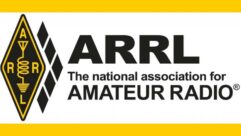A new proposal that would make it easier for emergency managers to send emergency alerts in non-English languages over television and radio was pushed through by the FCC this week. However, broadcast engineers are already pondering the complexity of the upgrade for existing EAS equipment.
The proposal outlines ways to give emergency managers the option of using pre-scripted, template alert messages and prerecorded audio files in non-English languages when initiating alerts over the Emergency Alert System. Those recordings would be stored in the EAS devices of broadcasters.
The FCC proposes creating template alert scripts in the 13 most commonly-spoken non-English languages in the U.S. The template scripts and audio files would be produced by the commission.
The non-English languages would include Spanish, Chinese, Tagalog, Vietnamese, Arabic, French, Korean, Russian, Haitian Creole, German, Hindi, Portuguese and Italian.
According to U.S. Census data, more than 26 million people in the U.S. report that they do not speak English very well or at all. However, the FCC says the vast majority of alerts are issued only in English.
A key multilingual alerting challenge faced by authorities is translating time-sensitive alerts into additional languages during crises, according to the proposal.
The FCC extended the reach of the Wireless Emergency Alert (WEA) system last year, when the commission updated its rules to ensure WEA could support 13 languages using similar template scripts. WEA alerts also currently include American Sign Language.
FCC Chairwoman Jessica Rosenworcel said in prepared remarks: “I know if we get creative we can update radio and television alerts just like we are doing with Wireless Emergency Alerts.”
In the new Notice of Proposed Rulemaking (NPRM), the FCC says it will seek comment on the feasibility of creating a process through which emergency managers can initiate template alerts.
Broadcasters would be required to transmit the message in the template language that corresponds to their programming content. However, the FCC is hopeful broadcasters would take advantage of the templates to also air a multilingual alert if the local population within its listening area warrants it.
In addition, the proposal takes a closer look at developing and implementing American Sign Language (ASL) versions of the template alerts — presumably for TV and cable — including how ASL translations of the template scripts would be processed and displayed.
[Related: “FCC Workshop Focuses on Security for EAS and WEA“]
It is also conceivable, the FCC says, that there are some older EAS devices in use today that could not be updated or modified to enable template alert processing and transmission.
Radio World previously reported on comments on a listserv maintained by the Society of Broadcast Engineers that shows some broadcasters are worried that the current technical framework within EAS equipment at radio stations might be strained carrying out the FCC’s multilingual goals.
One commenter on the SBE listserv notes the length of alerts would double if the English version is then followed by another language creating a string of announcements. “And you think alerts are lengthy now,” the SBE listserv participant stated.
The commission in the NPRM asks what storage capabilities would be required for 30 second messages created with 16 template audio files for each of the 13 proposed template languages, in addition to the English language version. The total would be 224 audio files.
Among the questions the FCC asks in the NPRM is how long would it take for manufacturers to develop, test and release updates, and at what cost to EAS participants? And would the storage of template visual script and audio files in EAS device models require additional memory capacity via a firmware update; if so, at what cost?
The commission’s questions continue: “Would implementing the template alert processing approach present any unique challenges or require modifications with respect to EAS participant transmission processing systems upstream or downstream from the EAS device that would impact the time required for implementation?”
[Related: “FCC Wants More Feedback on Mandatory Disaster Reporting for Broadcasters“]
The commission says it recognizes that there could potentially be costs associated with adding memory capacity, firmware and/or other modifications to EAS devices, and changes could be required to downstream transmission processing systems. However, with so many unanswered questions, estimating the cost to make upgrades to EAS boxes is difficult, according to the FCC.
The commission used an aggregate of labor costs to arrive at an estimate of $12 million for the broadcast industry to fund the upgrades.
Comments on the NPRM (PS Docket No. 15-94) can be submitted once it is published in the National Register.












